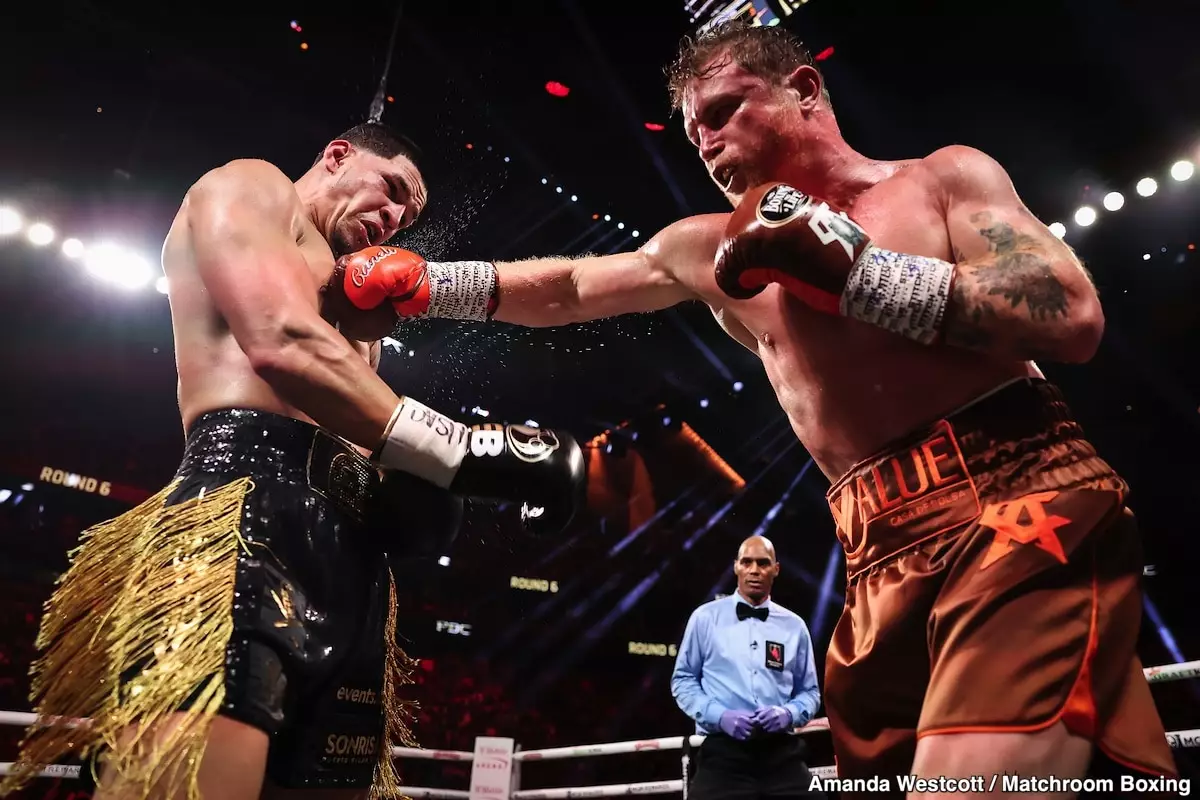As boxing enthusiasts, we often find ourselves scrutinizing the performances of our favorite fighters, particularly when they are in the limelight. One of the most talked-about figures these days is Canelo Alvarez. Following his recent bout against Edgar Berlanga, announcements and opinions have flooded in from various quarters. Among these opinions, Oscar De La Hoya’s critiques stand out prominently, especially during his ‘Clap Back Thursdays’ segment. His remarks raise essential questions about the current landscape of boxing, the standards with which we measure success, and whether fighters are chasing glory or simply settling for mediocrity.
The event at the T-Mobile Arena in Las Vegas is one that saw expectations high but results falling considerably short. De La Hoya pointedly noted that the arena did not sell out, a point he gleefully reiterated, making it seem almost as if he had predicted a disaster. He cited an entire section being curtained off and referenced multiple accounts from audience members confirming the sparse attendance. Such criticism lends itself to an even deeper societal issue within the sport; the gap between what fans anticipate from a high-profile matchup and what they actually receive in terms of entertainment value.
The bout itself showcased Canelo’s limitations against a larger opponent. Despite his track record of 62 wins, 2 losses, and 2 draws, along with 39 knockouts, Canelo faced the younger, robust Berlanga, weighing in at 193 pounds. Although Canelo landed significant shots that would have floored many within his weight class, he struggled to find his groove due to the size and resilience of Berlanga, ultimately resulting in a fight that went the distance without any strictly thrilling moments. De La Hoya’s remarks put a spotlight on the fight’s conspicuous lack of action, labeling it as a far cry from the legendary slugfests that fans long for.
De La Hoya did not shy away from criticizing not just the performance but also the choice of opponent. He questioned why Canelo opted for Berlanga, a fighter whose record features middling opposition. In making this selection, De La Hoya insinuates that Canelo not only might be avoiding higher-stakes matchups but is arguably showcasing a lack of ambition. The suggestion is that a contest against someone like David Benavidez, David Morrell, or even Christian Mbilli would present more challenging and interest-garnering fights. This leads us to ponder whether Canelo’s strategy revolves around preserving his record over pursuing legendary status.
De La Hoya audaciously admitted, “The bar has been set so low,” thus initiating a discussion around what it means for fighters to merely last the full distance rather than to seek a definitive victory through decisive action. The scrutiny reveals a chasm of expectations between today’s fighters and the standards upheld by past boxing legends. There is a prevailing sentiment that generations ago, fighters were driven to seek knockouts and electrifying performances, leading fans to question today’s ethos around boxing—one that seems to relish survival over triumph.
A pivotal part of De La Hoya’s critique is centered not only on Canelo’s choices but also on his physical approach. It has become apparent that Canelo’s stamina plays a crucial role in his ability to pursue knockouts. The weight disparity in his most recent fight points to the changes in boxing dynamics—often, the sheer weight and skill of the opponent can impede a fighter’s ability to deliver a definitive knockout blow. De La Hoya articulated that Canelo’s determination appears less focused on achieving knockout victories and more inclined towards navigating the fight without taking excessive risks.
According to De La Hoya, this shift in mentality reflects a significant change regarding boxing’s core values. Citing his own experience in the ring, he lamented the current acceptance of fighters who focus on avoiding defeat rather than seeking victory. With a mind-set that prioritizes financial stability over legacy, Canelo, in De La Hoya’s eyes, seems to place a premium on a cushy retirement rather than the warrior spirit that characterized boxing legends before him.
De La Hoya’s thoughts highlight an underlying discontent that resonates with many authentic boxing fans. The dialogue surrounding Canelo’s techniques and choices ignites a larger conversation about the essence of boxing: Are we, as fans, accepting lower-quality matchups as the norm? As new champions enter the ring, the sport appears at a crossroads, demanding that practitioners and fans alike reclaim the values that once made boxing a celebrated spectacle: unyielding bravery and thrilling competition.
As De La Hoya aptly put, “Don’t we want to see the best fight the best?” This question lingers and challenges us all to reflect on not only Canelo’s future choices but on the future direction of boxing itself. The sport cannot afford to settle for mediocrity; it must strive towards creating unforgettable moments that not only honor the heritage of boxing but elevate the sport into its next chapter.

